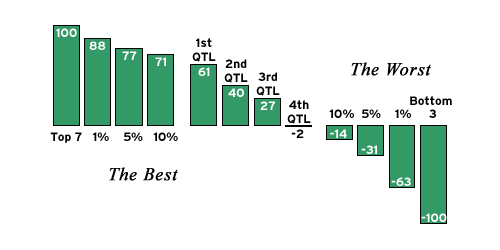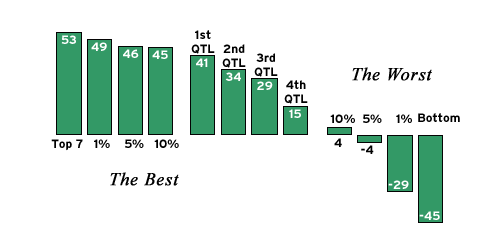Call center management is notorious for its abundance of measurement systems. Most of these systems, however, are associated with cost and conformance, such as the number of calls handled per hour. Unfortunately, these kinds of measures are far too narrow to influence the ways in which customer service representatives (CSRs) create value for the center. This article focuses on two underused measurement systems in today's call center environment:
- customer loyalty
- workplace engagement
An external measure of future revenue: customer engagement
The most successful call center management systems focus on individual CSR performance. To support those systems effectively, measurement systems must also reach to the individual level.
The expense of collecting individual CSR customer engagement data prohibited most companies from implementing measurement systems. However, recent technical advancements have greatly reduced the expense associated with data collection, allowing CSR level projects to proceed.
Measuring individual CSRs has produced some startling revelations. A study of 5,000 CSRs conducted by The Â鶹´«Ã½AV Organization found immediate impact of CSR performance on net customer engagement. (Net customer engagement is calculated by subtracting the percentage of customers who are disengaged after interacting with a CSR from the percentage of engaged customers created by CSR contact. For example, a CSR who has created 60% engaged and 10% disengaged customers would have a net engagement score of 50%.)
 |
The bars above the title The Best show the performance of the top seven CSRs, followed by the best 1%, 5%, and 10% of CSRs. The bars below The Worst show the performance of the worst three individuals and the worst 1%, 5%, and 10% of CSRs. The middle bars show the data grouped into quartiles.
The range of CSR performance in the study is stunningly wide. The top 25% of CSRs had an average of 61% net engaged customers after an interaction, but the bottom 25% of CSRs scored at -2% -- meaning that they alienated 2% more customers than they engaged. This gap between the best and worst performers has a large effect on this business' bottom line -- CSRs in the top quartile in customer engagement also produce lower customer attrition and have lower costs for serving customers.
The differences between the top seven performers and the bottom three performers are even more dramatic: Top performers create engagement with every interaction, while the bottom performers alienate every customer they talk to. Yet, most managers are blind to these performance differences because their customer engagement systems cannot measure at the individual CSR level.
Measuring workplace engagement: A leading measure of job performance
A second key measurement system is workplace engagement. Typically, call centers have measures of employee satisfaction, but traditional measurement systems are inadequate. They yield little information that helps managers influence CSR job performance. On the other hand, the Â鶹´«Ã½AV Q12, a measure of workplace engagement, is designed to correlate with team job performance.
Teams with higher workplace engagement (Q12) scores have lower turnover, increased productivity, decreased absenteeism, increased safety, and better customer engagement. Just as measurement of individual CSR performance has produced some startling revelations, comparing the measurements of CSR performance by workgroup has also yielded valuable insights. In the CSR study mentioned previously, Â鶹´«Ã½AV compared the scores of top- and bottom-performing workgroups to illustrate how managers affect their workgroups.
 |
Chart Two also displays net loyalty scores -- grouped by manager, not individual CSR. These team/manager results are remarkably similar to those of individual CSR data. The engagement scores of each manager's workgroup show a wide disparity between top and bottom performances. In this case, the top-quartile CSR team had a net loyalty score of 41%. In contrast, the bottom-quartile groups could only muster a net loyalty score of 15%. Additionally, the top team created engaged customers in 53% of their interactions, but the bottom-performing team created a net of 45% disengaged customers.
Since the manager is the only factor grouping individuals into teams, the range of performance between the best and worst teams can best be attributed to the impact of the team manager. If the team manager had no impact on team performance, there would be a very narrow gap between the best and worst teams. The conclusion? Team managers contribute to team performance in significant, and measurable, ways.
Good news, bad news, good news
Measurement is a pervasive part of current call center culture. This is both a curse and a blessing. The blessing is that most call center managers are receptive to systems of measurement. The curse is their adherence to traditional measures at the expense of a broader, more functional set of measures. The key to overcoming these barriers is to understand the link of measures to value for the center. Once those kinds of links are made, the measures described in this article can assume their roles as vital tools in a successful center.
In part three, we will explore how to integrate these fundamentals.
To read part three of this article, see "Making It All Work Together" in the "See Also" area on this page.